commentary Commentary
Commentary: How prepared is Singapore for the next flash flood?
A comprehensive strategy to manage floods in Singapore would comprise engineering, green and digital solutions, say Asit K Biswas and Cecilia Tortajada.
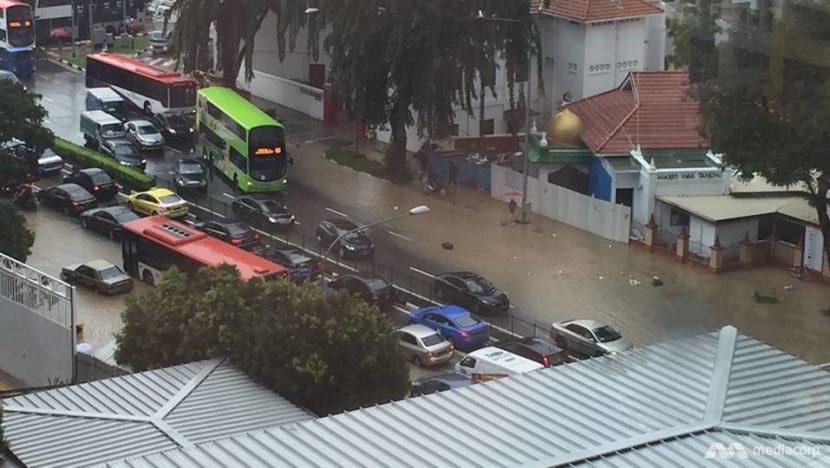
Traffic along Paya Lebar affected after heavy rain. (Photo: Thomas Tan)
SINGAPORE: Rainfall patterns in Singapore have been unusual in recent months. Thundery showers have persisted since August.
On Aug 11, heavy rain led to accumulated water, 50mm deep, on Aljunied Road, and on Aug 14, flash flooding occurred at the junction of Craig Road and Tanjong Pagar Road.
Last weekend, pictures of Bukit Timah canal filled to the brim were shared widely on social media.
But, as much as people may have been concerned, the chances of Bukit Timah canal water spilling over the road are almost non-existent.
READ: Climate change, floods and drought: Here’s how badly Singapore could be affected
While the occasional flash flood hasn’t caught us by surprise, many Singaporeans still remember those floods of Orchard Road in 2010 and 2011 to this date, when a month’s worth of rain fell in a few hours.
On Jun 16, 2010, two intense bouts of morning rain breached the Stamford Canal, leading to floods of up to 300mm along Singapore’s shopping belt. Older buildings such as Lucky Plaza, Liat Towers and Delfi Orchard saw their basements inundated with water.
The insurance claims that followed from business interruptions, property and vehicle damage were worth a hefty S$23 million.
And on Dec 23, 2011, 152mm of rain fell over three hours, partially submerging cars and low-lying shops.
During the past two weeks, rains have been quite heavy. The question arises whether Singapore is close to a once-in-a-hundred year storm, the likes of which drove millions from their homes in China this year. The answer is no.
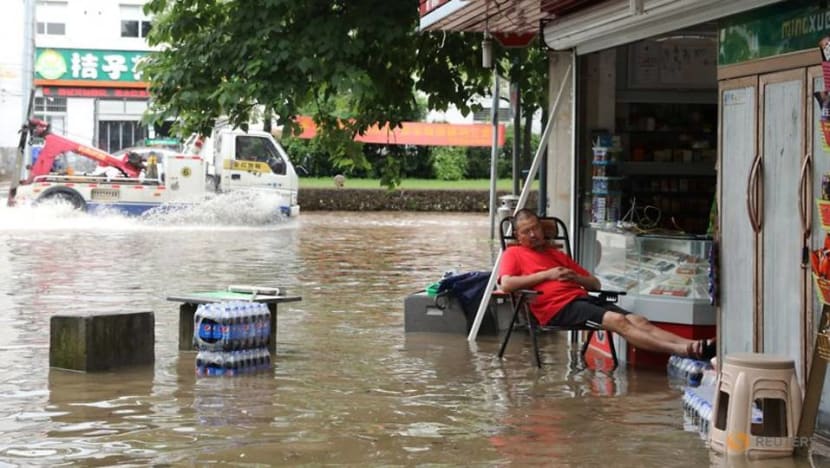
READ: Commentary: China struggles with ‘once-in-a-century’ floods that may be new normal
In Northern Sumatra, where floods occur each monsoon season with some regularity, the Indonesian military and other disaster relief authorities face a tough test of evacuating residents quickly.
Singapore, in a different geographical location, is very unlikely to face the national flooding emergencies China or Indonesia go through regularly, arising from coastal flooding and rivers overflowing, but will still face a complex set of challenges, especially around inland flash flooding.
READ: Commentary: Kelantan’s epic struggles with great, yellow floods each monsoon
BUILDING UP TO TACKLE FLASH FLOODS
Managing urban floods has always been a difficult and complex process. Coupled with the unpredictability, extent and magnitude of climate change, it is an even more arduous task for a small city-state like Singapore.
Cities all around the world are familiar with this predicament, as increasing urbanisation with concrete structures and surfaces do not allow water to be absorbed in the ground quickly.
Drain infrastructure can channel rainwater away from prime downtown neighbourhoods into rivers and other low-lying areas, but the trade-offs should discourage reliance on engineering to resolve flooding.
READ: Commentary: Rising temperatures, fires and floods highlight importance of understanding weather extremes
Singapore in particular is severely land constrained, with unit land costs among the highest in the world.
As then Minister for Environment and Water Resources Masagos Zulkifli pointed out in February 2018, widening canals to carry floodwater out of the city indefinitely is not a feasible solution, because of high costs and the land it needs.
There is also the possibility that future intense rainfall events could exceed the design capacity of the upgraded drain, especially due to climate change.
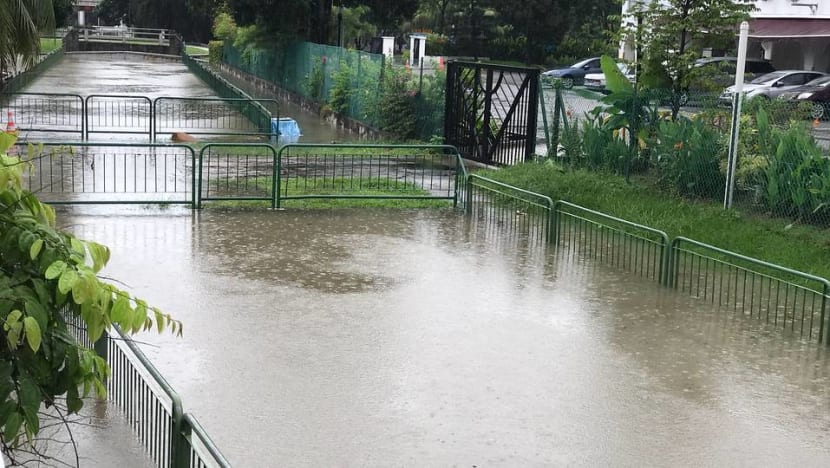
Engineering can help tackle flooding but would require huge investments and strong public support.
Tokyo – a city facing somewhat similar constraints – opted to build the world’s largest underground reservoir where floodwater from extreme rainfalls and major typhoons can be diverted. The entire structure took 12 years to construct and cost US$2 billion (S$2.72 billion).
The assets and lives saved only during the extreme flood event of 2014, however, justified the enormous cost.
This flood protection system is likely to continue serving Tokyo well. According to the Japanese Meteorological Agency, storms are increasing due to global warming. Rainfall measuring more than two inches an hour surged by 30 per cent from the past 30 years, and for rainfall over three inches an hour, 70 per cent.
Such occurrences are now observed in many parts of the world.
READ: Commentary: What Singapore can do to prepare for the next flood
LISTEN: Getting down to the big picture science of climate change
CITY PREPARED TO DEAL WITH A STORM TODAY
Since the 2010 to 2011 floods of Orchard Road area, PUB, Singapore’s national water agency, has done a remarkable job in managing floods.
Over the past decade, it has upgraded drainage design standards, ensuring they can handle higher rainfall intensities over much longer durations.
It has incorporated green infrastructure into its flood management strategy, like the Active, Beautiful and Clean Waters programme to integrate canals and reservoirs into community spaces, and the building of rooftop gardens.
It has also leveraged digital solutions – including the use of water sensors in drains and canals to detect high levels of water and new weather monitoring tools to forecast which street will see heavy rainfall, so PUB flood response teams can be deployed rapidly.
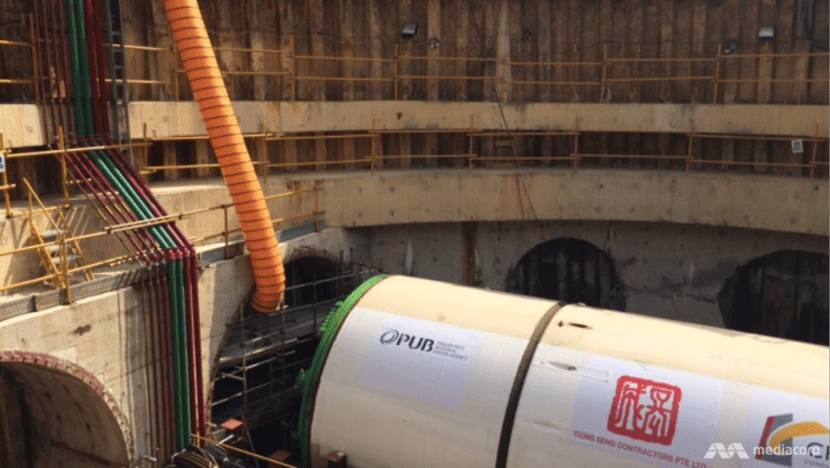
Like Tokyo, Singapore has developed an underground reservoir, though much smaller in scale. The 2km-long Stamford Diversion Canal was built in 2014 to divert stormwater into the Singapore River through underground tunnels.
In conjunction, the Stamford Detention Tank – an underwater storage facility the size of a football field – relieves drains in Holland Road during periods of heavy rain. These projects will prevent serious flooding in the Orchard Road area in the future.
Because of PUB’s advanced planning, flood-prone areas in Singapore have been reduced to less than 29 hectares by 2018, compared to about 79 hectares in 2008.
READ: Commentary: Let Singapore’s green spaces grow wild
BUT FLOOD FORECASTING MORE COMPLEX
Much as Singapore is better prepared to manage flash floods, can Singapore really say we are ready for the next big one?
Estimating a 100-year flood with any degree of reliability is a tall order. Assessing flood hazard requires information on their severity, frequency of occurrence, total area affected and duration.
Each one of these factors are difficult to predict. Combining all increases the degree of uncertainty significantly.
This challenge is even more complex as long-term rainfall records, necessary for any flood planning, are not available prior to independence.
READ: Commentary: How effectively can Singapore adapt to sea level rise?
Intense thunderstorms are complex systems, especially in Singapore’s warm and humid environment. Convections of air that influence thunderstorms are unpredictable and can change direction and frequency very quickly.
It is not uncommon to see heavy thunderstorms in one part of Singapore and no rain in areas in only 5km to 8km away. This patchiness complicates island-wide long-term flood management planning.
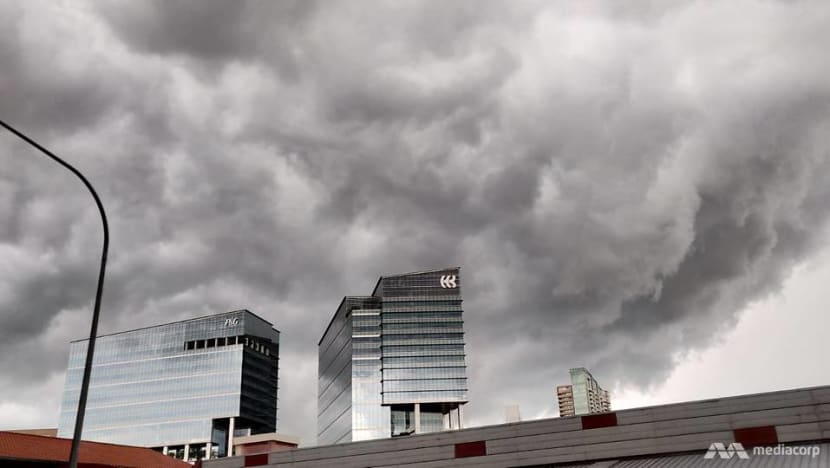
There is also growing evidence from all over the world that the challenge will be greater with climate change, as rainfall extremes increase.
A warming climate can make the situation worse and more complex, as a warmer atmosphere holds more moisture, intensifying flash flood-producing storms.
What used to be a full month’s rain can fall in a mere few hours, overwhelming the drainage capacity of the area. A 100-year storm centred over the Marina Catchment, which has an area of 10,000 ha, means 130mm of rainfall may fall in an hour. This would fill up about 5,190 Olympic-sized swimming pools.
READ: Commentary: Jakarta, the fastest sinking city in the world faces the biggest flooding challenge
ADAPTING AND MITIGATING TO THE REALITY OF FLOODS
With climate change, a real alternative for the future will be for Singaporeans to learn to live with small flash floods for short periods.
For example, in cities like Dhaka, what is considered to be a major flood in Singapore is locally termed as waterlogging – a reference to rainwater overwhelming urban drainage systems.
Considered a perennial problem, people have learnt to adapt their lives to such temporary inconveniences in low-lying areas.
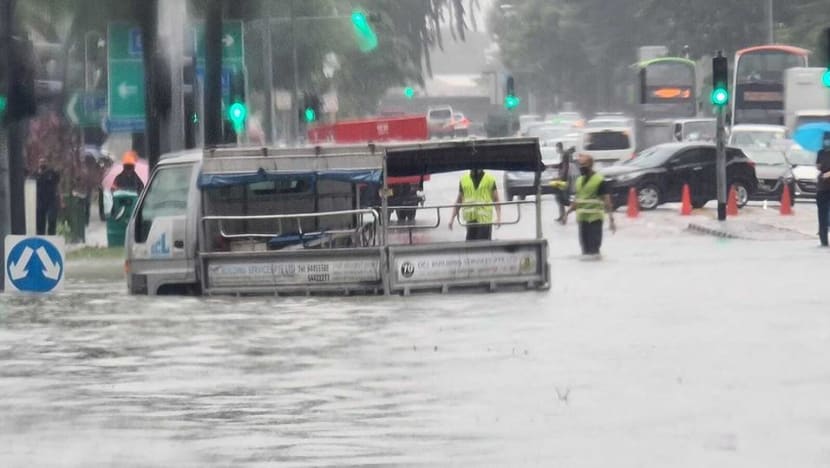
READ: Explainer: Why adapting to climate change matters
Globally, urban planners should strive towards coordinating water and urban planning more effectively. Urbanisation has led to an increase in stormwater runoff for which mitigation measures, such as permeable pavements and mangrove swamps, need to be contemplated but are considered in a handful of countries only.
Additionally, Singapore's new S$5 billion Coastal and Flood Protection Fund helps prepare against a different kind of flooding – coastal flooding wrought by climate change. Aimed at protecting the city-state from sea-level rise more effectively, it strengthens Singapore’s overall resilience to floods from various sources of water.
In the final analysis, no matter what steps are taken, the odds of climate-change induced floods occurring in Singapore, or any other part of the world, will never reach zero.
Thus, the only effective solution is to plan for a future in which people will have to live with changing conditions.
Prof Asit K Biswas, is Distinguished Visiting Professor, University of Glasgow, UK. Dr Cecilia Tortajada is Senior Research Fellow, Institute of Water Policy, Lee Kuan Yew School of Public Policy, National University of Singapore.













